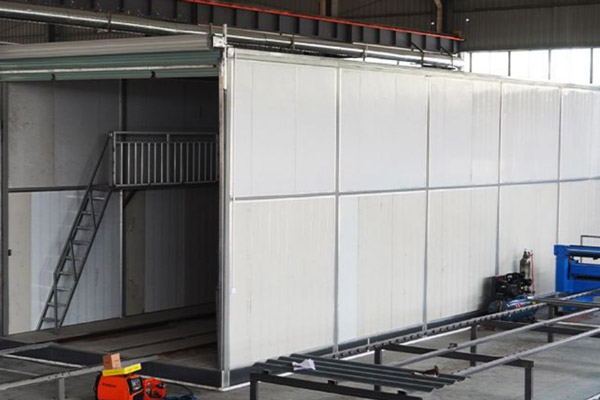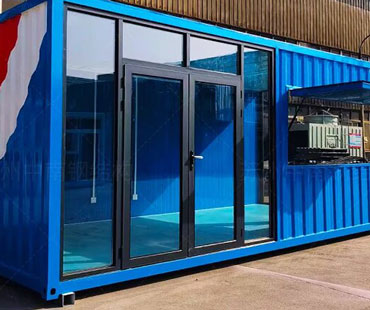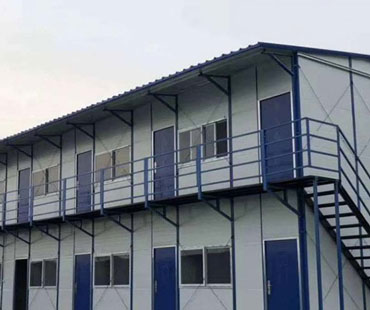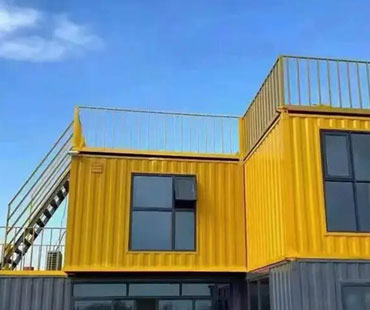In today’s global logistics and shipping industry, sustainability has become a central concern. As companies seek to reduce their carbon footprint and comply with increasingly stringent environmental regulations, the focus has shifted toward environmentally-friendly and sustainable container solutions. Containers, once merely standardized steel boxes for transporting goods, are now being reimagined as versatile, energy-efficient, and eco-conscious tools that align with both operational efficiency and environmental responsibility.
1. The Environmental Impact of Traditional Container Solutions
Traditional shipping containers, primarily made of steel, have played a critical role in international trade since the mid-20th century. While their durability and standardization transformed global logistics, they also pose environmental challenges:
High energy and resource consumption: Manufacturing steel containers requires significant energy and raw materials, contributing to carbon emissions.
Lifecycle waste: Many containers reach the end of their service life and are either scrapped or left unused, creating metal waste.
Transportation emissions: Heavy containers increase fuel consumption during shipping, leading to higher greenhouse gas emissions.
As a result, the industry faces increasing pressure to adopt greener solutions that mitigate these environmental impacts without compromising operational effectiveness.
2. Sustainable Materials in Container Manufacturing
One of the key strategies for environmental-friendly containers is the use of sustainable materials:
a. Recycled Steel and Aluminum
Recycled steel and aluminum reduce the demand for virgin metal production, lowering energy consumption and emissions. Using recycled materials also diverts scrap metal from landfills, further supporting environmental goals.
b. Lightweight Composite Materials
Advanced composites, including fiber-reinforced plastics, offer strength comparable to steel while reducing weight. Lighter containers consume less fuel during transport, directly decreasing CO₂ emissions. Additionally, composites often resist corrosion better, extending container lifespan and reducing replacement frequency.
c. Bio-based and Renewable Materials
Some container manufacturers experiment with bio-based materials for insulation panels or interior linings. Materials such as bamboo, cork, and recycled cardboard not only reduce reliance on petrochemical products but are also biodegradable, minimizing end-of-life waste.
3. Energy-Efficient and Eco-Friendly Design
Sustainable container solutions are not only about materials—they also involve innovative design features:
a. Modular and Reusable Structures
Containers designed for modularity can be reused across multiple shipping cycles, reducing the need for new containers. Stackable and collapsible designs further minimize storage space, saving energy in transport and warehousing.
b. Insulated and Refrigerated Containers
Energy-efficient refrigerated containers (reefers) are increasingly equipped with improved insulation and smart temperature controls. These enhancements reduce electricity consumption and improve the shelf life of perishable goods, aligning logistics with environmental and economic efficiency.
c. Solar-Powered Containers
Emerging designs incorporate solar panels to power refrigeration units or LED lighting. By harnessing renewable energy, solar-powered containers reduce reliance on fossil fuels during transport or storage, offering a tangible step toward carbon-neutral logistics.
4. Reuse, Repurposing, and Circular Economy Approaches
A critical component of sustainability is extending the lifecycle of containers:
Repurposing for construction: Old shipping containers are often converted into modular housing, pop-up stores, or office spaces. This practice not only reduces waste but also supports urban innovation and resource efficiency.
Container leasing and sharing platforms: By adopting leasing models, logistics companies can maximize the usage of each container, ensuring fewer containers remain idle and unused.
End-of-life recycling: Sustainable strategies include designing containers for easy disassembly, enabling the separation of metals and composites for recycling, thus closing the loop in the container lifecycle.

5. Digitalization and Smart Container Solutions
Technology also plays a pivotal role in sustainable container logistics:
a. IoT-Enabled Monitoring
Containers equipped with Internet of Things (IoT) sensors can monitor temperature, humidity, and location in real-time. This allows logistics operators to optimize transport routes, reduce spoilage, and prevent energy waste.
b. Predictive Maintenance
Smart sensors help predict container maintenance needs, preventing premature replacements and minimizing resource use. Timely maintenance reduces energy and materials consumption, supporting a sustainable logistics cycle.
c. Data-Driven Optimization
Using digital platforms to track container utilization improves fleet efficiency. Logistics managers can ensure containers are fully loaded, routes are optimized, and empty runs are minimized—significantly reducing fuel consumption and emissions.
6. Regulatory and Industry Drivers
Sustainable container solutions are increasingly driven by regulations and industry standards:
International Maritime Organization (IMO) regulations limit sulfur emissions and encourage energy efficiency in shipping operations.
ISO standards guide environmental management practices, promoting resource efficiency and waste reduction in container production and usage.
Corporate sustainability commitments: Major logistics and shipping companies are committing to net-zero emissions, creating demand for eco-friendly containers to meet sustainability targets.
These drivers encourage container manufacturers and logistics companies to innovate, adopting solutions that align environmental responsibility with business performance.
7. Strategic Advantages of Sustainable Container Solutions
Adopting environmental-friendly container solutions provides businesses with multiple strategic benefits:
1.Cost savings: Energy-efficient designs and lightweight materials reduce fuel consumption and operational costs.
2.Brand differentiation: Sustainable practices enhance corporate reputation and appeal to environmentally conscious clients and consumers.
3.Compliance and risk mitigation: Meeting environmental regulations reduces the risk of penalties and enhances supply chain resilience.
4.Innovation and scalability: Smart, modular, and reusable containers provide adaptable solutions for evolving logistics challenges.
8. Future Outlook
The future of container logistics is likely to see further integration of sustainability, technology, and circular economy principles:
Widespread adoption of solar-powered and hybrid containers.
Expansion of container reuse in urban infrastructure and creative industries.
AI and blockchain integration for optimized container tracking, reducing inefficiencies.
Development of fully recyclable or biodegradable containers using advanced materials.
These trends highlight the potential for containers not only to move goods efficiently but also to contribute actively to global sustainability goals.
Environmental-friendly and sustainable container solutions are transforming the logistics and shipping industry. By combining sustainable materials, energy-efficient design, smart technology, and lifecycle management, these containers help businesses reduce their environmental impact while maintaining operational efficiency. Companies adopting such solutions can achieve stable product transport, lower carbon emissions, enhanced brand reputation, and long-term cost savings. As environmental awareness continues to shape global trade, sustainable containers will play a central role in creating greener, more responsible, and efficient supply chains worldwide.


